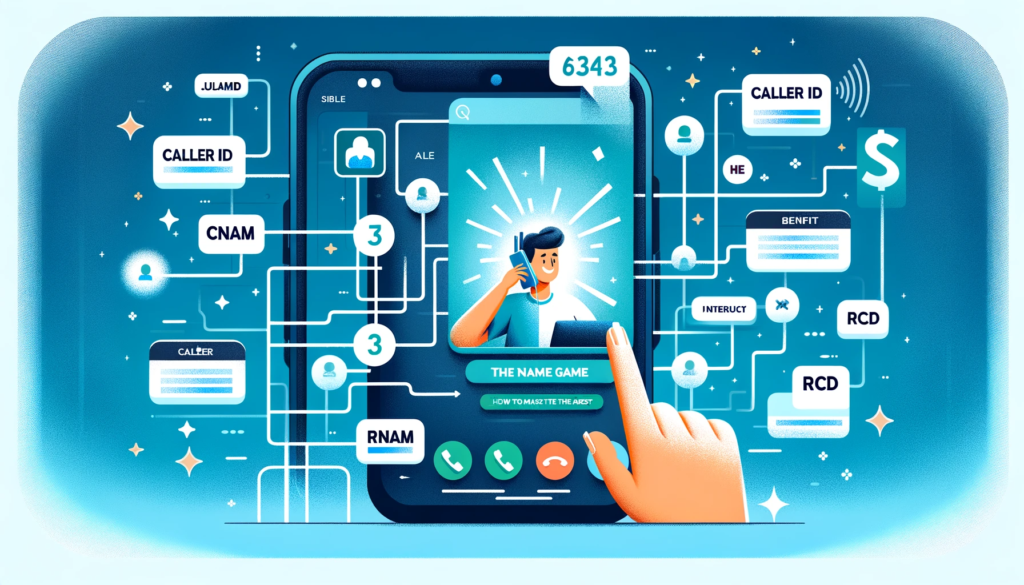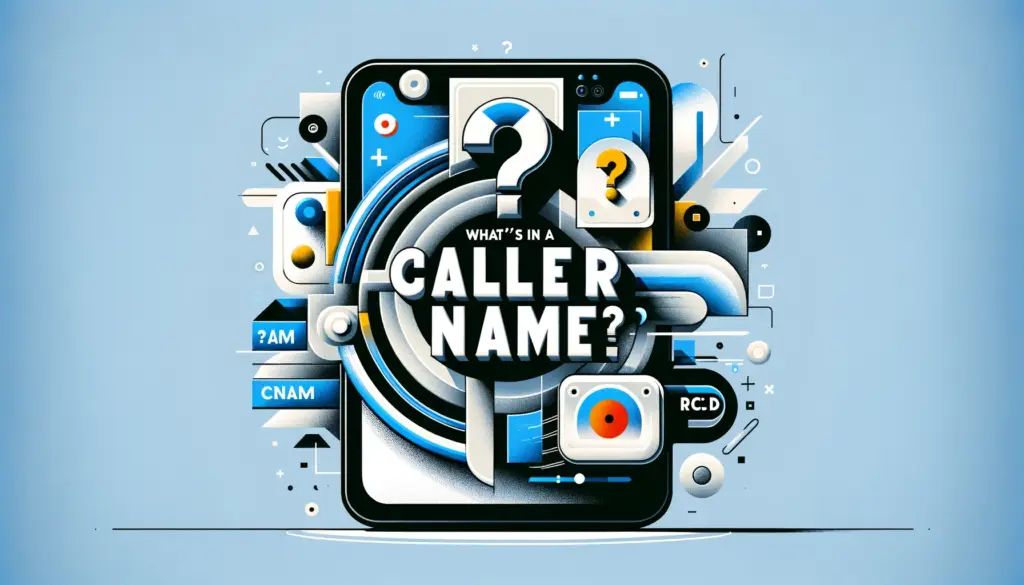When you get a phone call from an unfamiliar number, you may wonder who is on the other end of the line. Is it a friend or a foe? Is it a human or a robot? How can you be sure that the caller is who they claim to be and not a scammer?
In this blog post, we will explore what caller ID, CNAM, and RCD are, how they function together, and why they are important for your phone calls. We will also look at some of the advantages and disadvantages of using these technologies for branded calling.
What is Caller ID?
Caller ID is a feature that shows the phone number of the caller on your device when you receive a call. It is also known by various names such as CID, CLI, CLID, CND, CNID, CLIP, or call display. Caller ID is helpful for recognizing who is calling you, as well as for verifying their identity and reputation.
Caller ID works by sending the phone number to your service provider’s network when you make or receive a call. Your service provider then delivers and displays the phone number on your device. However, sometimes the phone number may not be enough to identify the caller correctly. For example, some callers may use spoofing techniques to hide or change their phone numbers.
What is CNAM?
CNAM stands for Caller Name or Caller Name Presentation. It is a feature that shows the name (or information) of the caller on your device when you receive a call. It could be a company name or an individual name. For example, if someone calls you from Microsoft Corporation with the phone number +1-425-882-0000, your device will show “Microsoft Corporation” as the caller name.
CNAM works by fetching the name data from various sources when your service provider receives a call. These sources include public databases that contain information about phone numbers and names associated with them. There are about eight CNAM database providers in the US, some of which are run by carriers and some by independent companies.
CNAM is essential for providing accurate and trustworthy caller identity information to consumers. However, there are some limitations and challenges with using CNAM data. For instance:
- Not all databases are equally well maintained and updated.
- Some databases may have inaccurate or outdated information.
- Some databases may not cover all regions or countries.
- Some databases may not support certain types of names (such as nicknames or aliases).
- Some databases may not respect privacy preferences (such as blocking unknown callers).
What is RCD?
RCD stands for Rich Call Data. It is a feature that shows additional information about the caller on your device when you receive a call. It could include not only the name but also other details such as:
- The caller’s photo
- The caller’s logo
- The caller’s location
- The caller’s business category
- The caller’s rating
RCD works by transmitting rich call data through an authentication framework called STIR/SHAKEN. This framework ensures that only authorized parties can access rich call data over encrypted channels. STIR/SHAKEN also verifies that rich call data matches with other identity attributes such as phone numbers and names.
RCD is designed to provide more transparency and trustworthiness for consumers who want to know more about who they are talking to on their phones. However, there are some benefits and challenges with using RCD technology. For example:
- Benefits:
- RCD can help consumers make informed decisions about whether to answer or reject calls from unknown numbers.
- RCD can help businesses build trust and loyalty with their customers by providing relevant information about their products or services.
- RCD can help regulators monitor compliance with anti-spam laws and protect consumers from unwanted calls.
- RCD can help service providers improve network performance and reduce costs by optimizing routing decisions.
- Challenges:
- RCD requires coordination among multiple stakeholders such as carriers, regulators, service providers, database providers, authentication providers, and end users.
- RCD requires interoperability among different systems such as legacy systems (that do not support STIR/SHAKEN) and new systems (that support STIR/SHAKEN).
- RCD requires security measures such as encryption keys (that protect rich call data) and certificates (that authenticate rich call data).
- RCD requires consumer education (that informs consumers about how to use rich call data) and consent (that respects consumer preferences).

The Name Game: How to Make the Most of Caller ID, CNAM, and RCD
Caller ID, CNAM, and RCD are three technologies that aim to improve how we identify who we are talking to on our phones. They have different purposes but share some common goals: to provide accurate information; to enhance trust; to reduce spam; and to improve user experience.
However, these technologies are not perfect and may have some drawbacks or limitations. Therefore, it is important to use them wisely and responsibly. Here are some tips on how to make the most of caller ID, CNAM, and RCD:
- Check the source and accuracy of the information you receive from caller ID, CNAM, and RCD. Do not rely solely on them to determine the caller’s identity or intention. Always verify the information with other sources or methods if possible.
- Be aware of the privacy and security risks associated with caller ID, CNAM, and RCD. Do not share your personal or sensitive information with unknown or suspicious callers. Use the blocking or reporting features on your device or service provider to prevent unwanted or fraudulent calls.
- Be respectful of the preferences and rights of other callers and consumers. Do not use spoofing or other deceptive techniques to manipulate your caller ID, CNAM, or RCD. Do not violate the anti-spam laws or regulations in your region or country. Do not abuse or harass other callers or consumers with unwanted or inappropriate calls.
Caller ID, CNAM, and RCD are powerful tools that can enhance your phone communication. By using them properly and ethically, you can enjoy the benefits of knowing who is calling you and why, and make your phone calls more productive and enjoyable.



